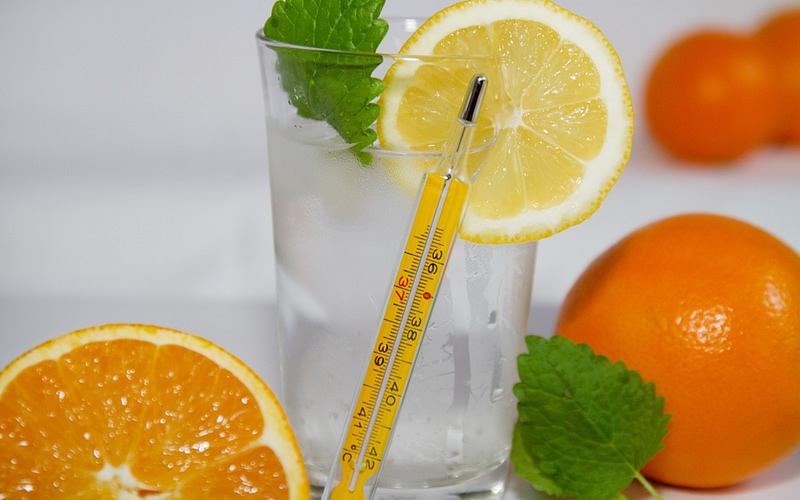By Mike Robertson, College of Charleston | There’s hot, and then there’s Charleston hot – the kind of heavy, suffocating hot that has residents wondering why they live here and visitors knowing why they don’t.
Yep, Charleston knows hot. It also knows what it’s like when you add a nice thick layer of humidity to that hot. In the South, we call it summer.
And, while most of us have adapted to the summer heat, even Southerners are susceptible to the dangerous and even life-threatening effects that extreme heat can have on our bodies.
 “On hot days, high humidity prevents the body’s cooling system – sweating – from working efficiently and can lead to increased core body temperature and heat-related illness (HRI),” says Brian Bossak, an associate professor of public health in the College of Charleston School of Education, Health, and Human Performance.
“On hot days, high humidity prevents the body’s cooling system – sweating – from working efficiently and can lead to increased core body temperature and heat-related illness (HRI),” says Brian Bossak, an associate professor of public health in the College of Charleston School of Education, Health, and Human Performance.
Bossak is currently working on a pilot project involving an HRI-prevention app for Hispanic migrant workers, so he’s very familiar with the ways in which heat can impact the human body. He adds that examples of HRI include heat rash, sunburn, heat cramps, heat exhaustion and heat stroke.
“The most serious illness is heat stroke, a life-threatening emergency from becoming too hot,” he says.
So, what does Bossak suggest we do to stay safe and healthy in the summer heat? Here are five ways to beat the heat – even when it’s Charleston hot.
Stay cool inside and out.
Staying out of the heat is the best (and most obvious) way to avoid overheating and HRI. Of course, most of us can’t stay inside all summer long, so when we do go outside it’s important that we stay out of the direct sunlight and mind our Ps: planning and pacing. Plan your outdoor activities for the coolest times of day, mornings and evenings, and pace yourself by starting slowly, exerting yourself gradually and taking breaks often to give your body a chance to cool down.
The best way to do this is to go into the air conditioning, take a cool shower or rest in the shade. Bossak adds that the wind – whether from an electric fan or a natural breeze – may not help your body cool down or prevent HRI if you’re already dehydrated or if HRI has already set in and you’re no longer sweating.
“In hot but windy environments, people might not feel hot or sick until it’s too late because the wind is actively moving moisture from the skin, so the skin feels a little bit cooler than it would otherwise,” he says.
Keep under cover.
We can’t always have it made in the shade, but covering up and dressing appropriately can certainly help keep us cool.
Sunglasses and a wide-brimmed hat will help protect your face and eyes from the sun, and lightweight, light-colored, loose-fitting clothing helps keep you cool in the heat. And don’t forget your sunscreen. Sunburn doesn’t cause just pain, premature aging and potential skin cancer; it affects your body’s ability to cool itself and causes you to lose body fluids. Apply sunscreen at least 30 minutes prior to going outside, and reapply every 90 minutes or so, according to the directions.
Drink to your health.
It’s no secret that staying hydrated is essential when it’s hot outside. But don’t wait until you’re thirsty to drink. Drink fluids often, throughout the day, regardless of what you’re doing.
“Dehydration can come on fast and is very common on hot days,” says Bossak, noting that not all drinks are created equally: While sugary and alcoholic drinks only cause more fluid loss and very cold drinks can cause cramping, sports drinks help replace the salt and minerals lost by sweating and water is always a safe bet.
Know how hot is hot and when.
Staying aware of the conditions and risks is just plain smart. Sure: You’ll know when it’s hot. But when it feels abnormally oppressive outside, it’s prudent to follow the local news for heat alerts and safety tips.
Better yet: Download the OSHA-NIOSH Heat Safety Tool app, which features a real-time heat index and hourly forecasts, as well as occupational safety and health recommendations from OSHA and NIOSH so you can better plan outdoor activities.
“The app takes into account both the ambient temperature and humidity, and it is the humidity factor that frequently increases HRI risk,” says Bossak. “If the app indicates elevated levels of risk, precautionary measures are suggested, and the app includes a description of different categories of HRI.”
Do your homework.
Yes, weather can be a bit unpredictable. But the risk factors, symptoms and treatments for heat-related illness are all things that you can prepare for now so you can act quickly and appropriately in the heat of the moment.
Knowing the risk factors for HRI will help you monitor the health of those around you. These include age (i.e., infants, young children and people who are 65 years or older) and health problems (i.e., overweight or illness, especially heart disease or high blood pressure – or people taking medication for depression, insomnia or poor circulation).
HRI isn’t limited to people who are working outside, of course, and we should all be aware of the signs and what to do if you or someone else starts exhibiting them. While a heat rash, sunburn or even heat cramps might be obvious, the difference between symptoms of heat exhaustion and symptoms of heat stroke can be confusing – and deadly.
“HRI can progress rapidly,” says Bossak, noting that signs of heat exhaustion can include muscle cramps; weakness; heavy sweating; cold, pale and clammy skin; nausea or vomiting; headache; dizziness or fainting – and should be taken seriously, especially when they last more than an hour.
Signs of heat stroke include high body temperature; fast, strong pulse; headache; confusion; nausea; and dizziness or loss of consciousness. If you suspect someone is experiencing a heat stroke, call 911 right away, move the person to a cooler place and use cool cloths to help cool them down. Do not give them anything to drink.
After all, when it comes to beating the heat, staying cool is one thing – staying safe and well is quite another. So, be careful!
Mike Robertson is senior director of media relations at the College of Charleston.
- Have a comment? Send to: editor@charlestoncurrents.com




 We Can Do Better, South Carolina!
We Can Do Better, South Carolina!
























